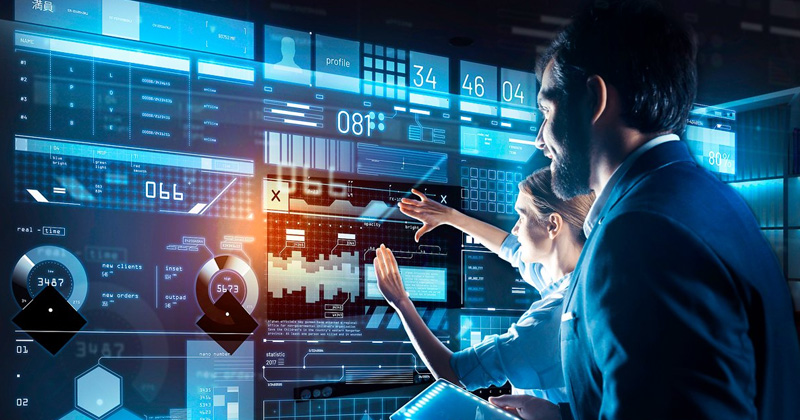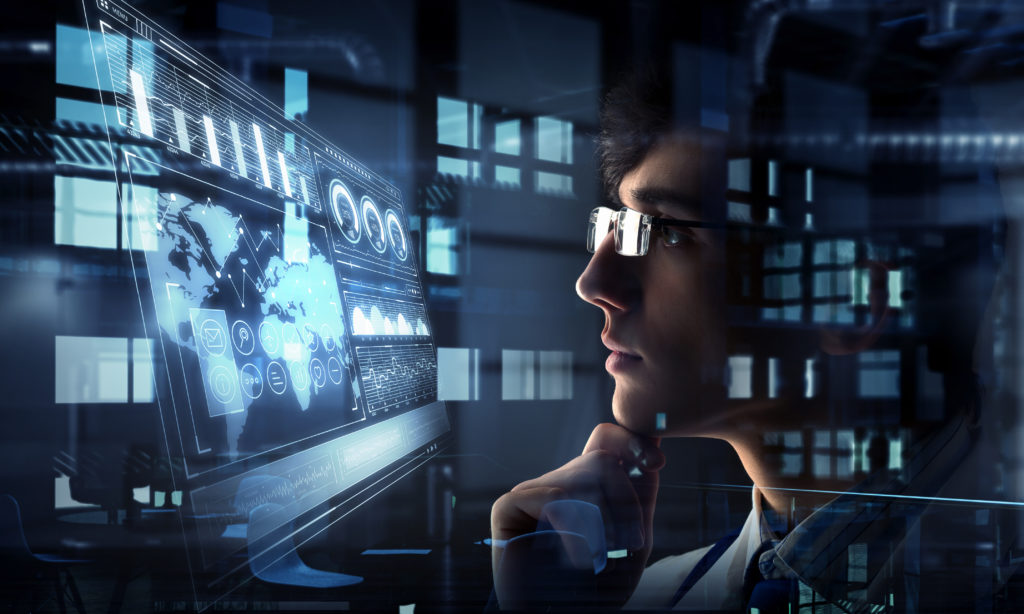In computing, “IT” stands for Information Technology. It’s all about using computers and technology to store, retrieve, transmit, and manipulate data or information. Think of IT as the backbone of our digital world, helping us do things like sending emails, browsing the internet, and using apps on our smartphones.
It includes everything from hardware like computers and servers to software like programs and apps. IT plays a crucial role in our daily lives, making tasks easier and faster.
Whether it’s keeping in touch with friends or completing school assignments, IT is there to help us navigate the digital landscape.
What does IT encompass?

Information Technology (IT) encompasses a wide range of services and technologies designed to manage and process information efficiently. These services and technologies include
Hardware
This includes physical devices such as computers, servers, routers, switches, and storage devices. Hardware forms the foundation of IT infrastructure, providing the necessary computing power and storage capacity to support various applications and services.
Software
Software refers to programs, applications, and operating systems that enable users to perform specific tasks on computers and other electronic devices. This includes productivity software like Microsoft Office, as well as specialized applications for tasks like graphic design, programming, and database management.
Networks
Networks consist of interconnected devices and systems that allow data to be transmitted and shared across different locations. This includes local area networks (LANs), wide area networks (WANs), and the internet. Networking technologies such as Ethernet, Wi-Fi, and TCP/IP protocols enable communication between devices and facilitate the exchange of information.
Data storage and management
IT involves storing, organizing, and managing vast amounts of data efficiently. This includes technologies such as databases, cloud storage, and data backup solutions. Data management practices ensure that information is accessible, secure, and compliant with relevant regulations.
Cybersecurity
With the increasing threat of cyberattacks and data breaches, cybersecurity has become a critical aspect of IT. This includes measures such as firewalls, antivirus software, encryption, and intrusion detection systems to protect networks, systems, and data from unauthorized access and malicious activities.
Examples of IT applications
Computers: Computers are perhaps the most familiar IT application, used for a wide range of tasks such as word processing, web browsing, gaming, and programming. They come in various forms, including desktops, laptops, tablets, and servers, each tailored to specific computing needs.
Smartphones: Smartphones have become indispensable devices in today’s connected world, combining features of a computer, phone, camera, and multimedia player into a single handheld device. They enable users to access information, communicate with others, and perform various tasks on the go.
Internet: The internet is a global network of interconnected computers and devices that allows users to access a vast array of online resources and services. It facilitates communication, collaboration, research, entertainment, and commerce, shaping how we interact with information and each other in the digital age.
Cloud computing: Cloud computing involves delivering computing services such as storage, processing power, and software over the internet on a pay-as-you-go basis. It enables organizations and individuals to access scalable and flexible IT resources without the need for on-premises infrastructure.
Internet of Things (IoT): IoT refers to the network of interconnected devices embedded with sensors, software, and other technologies that enable them to collect and exchange data. Examples include smart home devices, wearable gadgets, industrial sensors, and connected vehicles, which enhance automation, efficiency, and convenience in various domains.
Why is IT important in computing?

IT is important in computing because it helps us communicate, work more efficiently, and come up with new ideas. It makes things like sending messages, organizing tasks, and creating new inventions easier and faster.
Making conversation easier
IT (information technology) is a very important part of communication because it gives people many ways to share information and ideas. IT makes it possible for people and businesses in different places and time zones to interact effectively through email, instant messaging, videoconferencing, and social media sites. It gets around physical limitations so that people can work together, share information, and plan actions in real time.
IT improves communication, which encourages teamwork, collaboration, and sharing of information. This leads to better relationships, more productivity, and smarter decisions.
Making things more productive
IT boosts productivity by handling jobs that are done over and over, streamlining processes, and giving people access to tools and resources that help them work faster.
IT helps businesses run more efficiently, make fewer mistakes, and get more done by using software programs, databases, and process automation systems. For instance, project management software helps teams better plan tasks, keep track of progress, and work together on projects.
Customer relationship management (CRM) systems, on the other hand, make it easier for businesses to handle interactions with customers and sales. Information technology (IT) gives people the right technology and tools to get things done faster, make better choices, and do more with less work.
Promoting new ideas
IT is a key driver of innovation because it allows people to try new things, learn more, and be creative. It gives people and groups the chance to use new tools, try out new ideas, and come up with creative answers to hard problems.
For instance, progress in artificial intelligence (AI), machine learning, and data analytics has led to ground-breaking new ideas in healthcare, banking, transportation, and entertainment, among other areas. IT infrastructure, like cloud computing and high-performance computing, gives cutting-edge research and development projects the flexibility and computer power they need to run.
IT helps the economy grow, makes businesses more competitive, and opens up new ways for people to grow and move forward in society by backing new ideas.
How does IT work?

To understand how IT works, you should first look at the most basic parts of computers and networks. Let’s explore into this
How computers and networks function
Computers work by processing and storing data using electronic components such as processors (CPU), memory (RAM), storage devices (hard drives, SSDs), and input/output devices (keyboard, mouse, monitor).
When you perform tasks on a computer, like typing a document or browsing the internet, the CPU processes the instructions and stores data temporarily in RAM.
Networks, on the other hand, connect multiple computers and devices together, allowing them to communicate and share information. They use protocols and networking hardware like routers, switches, and cables to transmit data between devices.
Software and hardware components
Software refers to programs, applications, and operating systems that enable users to interact with computers and perform specific tasks. Operating systems (e.g., Windows, macOS, Linux) manage hardware resources and provide a user interface for interacting with the computer.
Application software (e.g., word processors, web browsers, games) allows users to perform specific tasks like writing documents, browsing the internet, or playing games. Hardware components include physical devices such as processors, memory, storage devices, input/output devices, and networking equipment.
Together, software and hardware work in tandem to enable computing tasks and facilitate communication and data processing.
FAQ
Why is IT called computing?
IT is called computing because it involves the processing and manipulation of data or information using computers and technology.
What is the difference between IT and ICT?
The difference between IT and ICT lies in their scope: IT (Information Technology) focuses on the use of computers and technology to manage and process information, while ICT (Information and Communication Technology) includes a broader range of technologies that facilitate communication in addition to information management.
What are 3 examples of IT?
Three examples of IT include computers (hardware), software applications (such as word processors and web browsers), and computer networks (which enable communication and data exchange between devices).
Which course is best between IT and ICT?
The choice between IT and ICT depends on individual interests and career goals. IT courses typically focus on technical aspects such as computer hardware, software development, and networking, while ICT courses may include a broader range of topics such as communication technologies, digital media, and information systems management. It’s best to choose the course that aligns with your specific interests and career aspirations.
Final thoughts
Information Technology (IT) is the backbone of our digital world, encompassing computers, networks, software, and more. It enables us to communicate, work efficiently, and innovate, shaping the way we live and interact in today’s technology-driven society. Understanding IT is essential for navigating the modern world and unlocking its countless opportunities.
